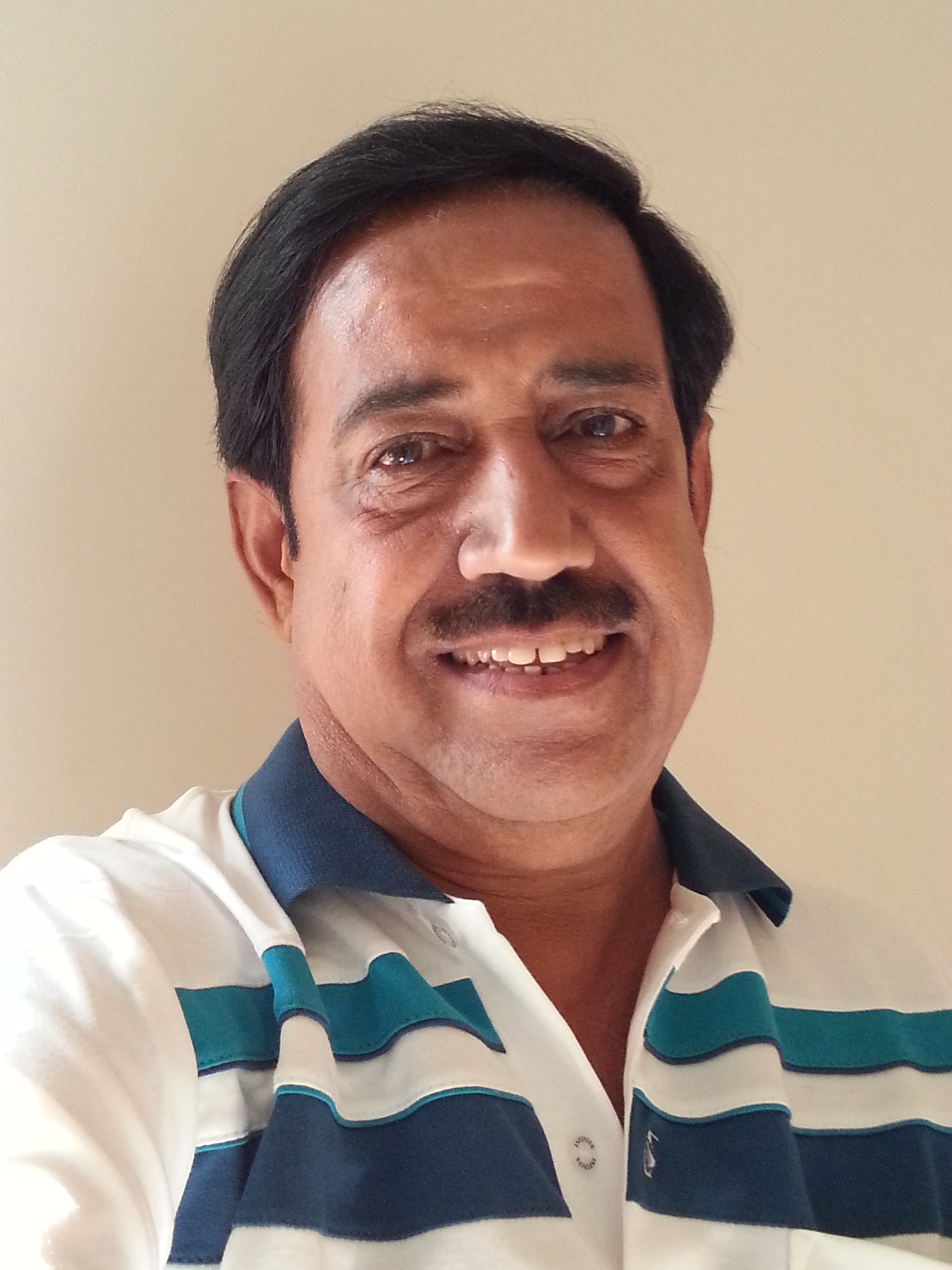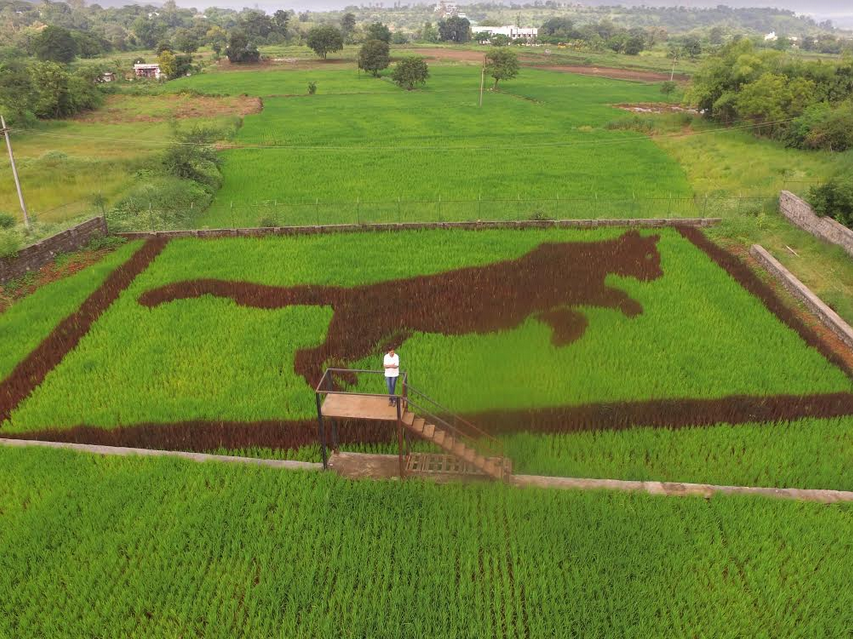Exclusive: How Can You ‘Paint’ with Paddy? Let India’s Sole Paddy Artist Show You!
A Pune-based mechanical engineer and industrialist, Shrikant Ingalhalikar has been creating detailed tableaus out of thousands of coloured paddy shoots since 2016 and aims to continue doing so.

In India, the odds of coming across a paddy field that has been raised to appear as an image is almost null. By ‘image,’ what we mean is creating impressively detailed tableaus out of thousands of coloured paddy shoots!
If you think we are joking, let us tell you about the village of Inakatade in Japan, where hundreds of people have been coming together to conjure up artistic masterpieces across their paddy fields, and today, this community practice has earned the little village an iconic status across the world!
Interestingly, in a paddy-intensive agrarian country like India, it is quite surprising how such a concept never found a pedestal! While one could say that the unavailability of differently hued varieties of paddy in India is an important reason, we also need to consider the livelihood constraints of farmers in the country that forbid them from pursuing such artistic trails.
But if you happen to visit the sleepy little village of Donje Phata in Maharashtra at the right time, it is quite possible to see a farm with multi-hued shoots of paddy that have been strategically grown to appear as a painting!

It was Shrikant Ingalhalikar, a Pune-based mechanical engineer and industrialist, who purely out of his own interest first introduced Tanbo art (as it is known in Japan and the rest of the world) in India with a giant tableau of Lord Ganesha across his 120×80 feet patch of land in 2016, that he singlehandedly created.
Since then, this village has not only been featured by every national and regional media outlet, but a large number of inquisitive tourists and agriculturists also flock to see this man-made wonder with their own eyes.
These artworks are amazing, but we were more curious about how the man managed to source out relatively unknown coloured variations of paddy in India and what went in the process of turning an entire field into a giant canvas with creative images!
Ingalhalikar, who is a self-professed amateur botanist, has been farming for easily over two decades now and his fascination with paddy led him to the jungles of Western Ghats, where he collected many rare and indigenous varieties of paddy seeds over the years.
“I’d known about Tanbo art for a very long time, but it hadn’t been until I stumbled upon the black-leafed paddy variety of Nazar Bath, that I’d considered the possibility of actually trying a hand at the Japanese artform on my farm,” he says to The Better India.
But it was easier said than done.
Unlike Japan where Tanbo art is a community effort, Ingalhalikar was on his own in Donje Phata. Right from developing a design to etching across the designated area to getting in knee-deep muddy slush and identifying patches of land for strategically planting coloured paddy variants, he did everything on his own.
It is also imperative to have a distinctive understanding of the growth cycle and irrigation needs pertaining to each variety, as these are not the same.

“The design part is not all that hard since I’m a graphic designer as well. Pursuing Tanbo art is my passion, and doing this year after year has kept me going. However, because it is just me, it often becomes quite painstaking to come up with vibrant and intricate designs, especially because of the unavailability of colour-leafed paddy varieties in India and lack of support from people, especially regarding manpower,” he says.
While Ingalhalikar has tried his level best to source the multi-hued paddy variants from Japan and had also written to concerned authorities on many occasions, the laws dealing with importing exotic paddy seeds deems such acts illegal, even if it is for artistic and non- commercial purposes, which left him with not much options other than the Nazar Bath.
Ingalhalikar further explains that the black-leaved variant, which is quite rare and only sporadically found in pockets of certain high altitude and hilly regions in the country, is what he uses to hue different sections in his work and he had come to the possession of the seeds during his rare and indigenous seed collection endeavours. “As the name suggests, this variety is used by farmers to cast ‘nazar,’ or the evil eye away and not really for consumption,” clarifies Ingalhalikar.
To celebrate the flora and fauna of India, he chose to feature the rare Black Panther across his farm canvas last year and carrying forward the same legacy, clubbed together with his love for bird watching, this year he plans to showcase another lesser-known species—the Emerald Dove!
“Because of the incessant rains, I’m not sure that I will be able to accomplish the paddy artwork this year as the seeds have received rain-fed irrigation much more than it should and possibly many seeds have flown away. By mid-August, I can confirm whether it will materialise or not,” he adds.
Ingalhalikar shares that whether or not people come forward to support him in his endeavours, he will continue painting his farm with shades of green and black.

The only thing which saddens him is that despite countless people heading to Donje Phata to view his work, nobody has felt motivated enough to start anything similar yet.
“It would be unfair to farmers if I suggest that they to try a hand at Tanbo art as their livelihoods are already so strained. I personally believe that if anyone should take this up in India, it should be landscape designers, who could work out wonders and possibly figure out ways to source out other coloured variants of paddy for the same. They could even tie up with local farmers and help them economically while creating artistic masterpieces!” a hopeful Ingalhalikar says.
Lastly, he adds that by doing everything manually, right from sowing the seeds and growing them in a nursery before replanting them in the muddy slush, he is preserving the spirit of handiwork and through it, the core of art.
You may also like: Stunning Masterpieces from Gourds? These Mysuru Artists Are Brilliant at It!
“Today there are machines even for sowing and replanting paddy, and sadly, the conventional farming practices which truly symbolised the blood and sweat of farmers and the fruits of their labour, are slowly getting phased out. I’m only upholding those values through my art,” he concludes.
Besides paddy art, Shrikant Ingalhalikar actively pursues wildlife photography and is an active arboriculturist too. He has also penned down many books, of which Flowers of Sahyadri is quite renowned. You can check more of his works here.
You can reach out to Shrikant Ingalhalikar at [email protected].
(Edited by Gayatri Mishra)
Like this story? Or have something to share?
Write to us: [email protected]
Connect with us on Facebook and Twitter.
NEW: Click here to get positive news on WhatsApp!
If you found our stories insightful, informative, or even just enjoyable, we invite you to consider making a voluntary payment to support the work we do at The Better India. Your contribution helps us continue producing quality content that educates, inspires, and drives positive change.
Choose one of the payment options below for your contribution-
By paying for the stories you value, you directly contribute to sustaining our efforts focused on making a difference in the world. Together, let’s ensure that impactful stories continue to be told and shared, enriching lives and communities alike.
Thank you for your support. Here are some frequently asked questions you might find helpful to know why you are contributing?


This story made me
-
97
-
121
-
89
-
167











